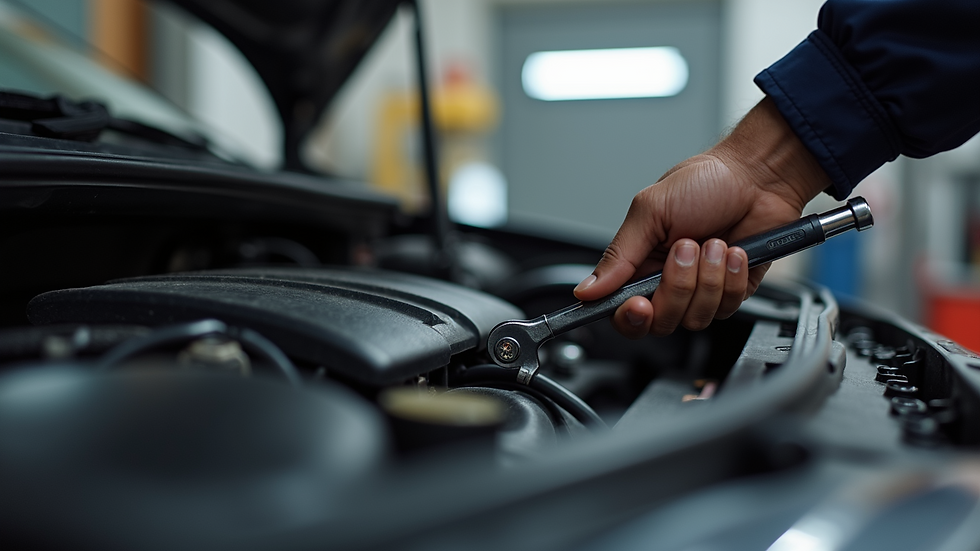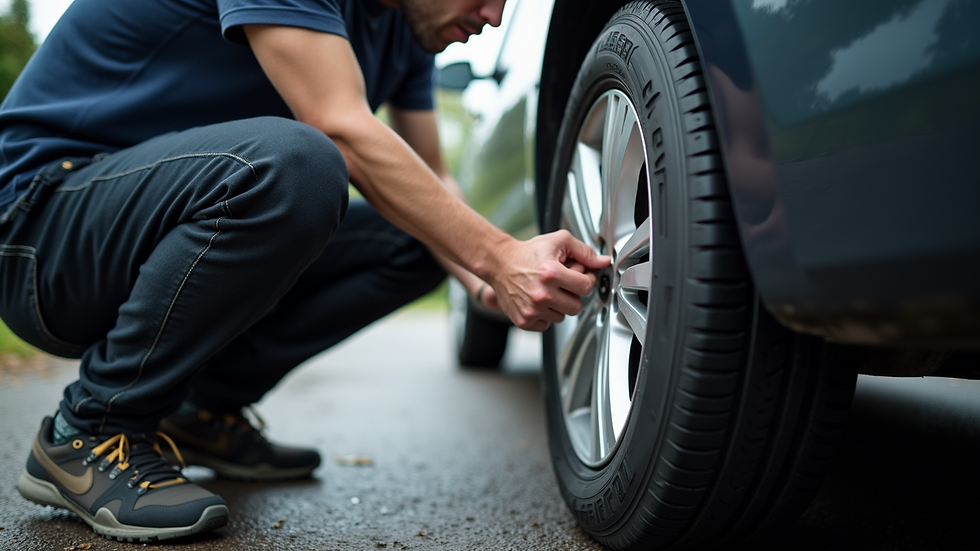Top 10 Car Maintenance Tricks Every DIY Enthusiast Should Know
- swarthytroll2022
- Jul 3
- 4 min read
Car maintenance can seem daunting, especially for those who are just starting their DIY journey. However, with the right tricks up your sleeve, you can keep your vehicle running smoothly without breaking the bank. In this post, we will explore ten essential car maintenance tricks that every DIY enthusiast should know. These tips will not only save you money but also give you a sense of accomplishment as you take care of your vehicle.
1. Regular Oil Changes
One of the most important aspects of car maintenance is changing the oil regularly. Oil lubricates the engine and keeps it running smoothly. Over time, oil breaks down and becomes less effective.
Tip: Check your owner’s manual for the recommended oil change interval. Generally, it is advisable to change the oil every 3,000 to 5,000 miles.
To change the oil, you will need an oil filter, a wrench, and a drain pan. Make sure to warm up the engine slightly before draining the oil, as warm oil flows better.
Always dispose of used oil properly at a recycling center.
2. Tire Maintenance
Tires are the only contact your car has with the road, so keeping them in good shape is crucial.
Tip: Check tire pressure monthly and before long trips. Under-inflated tires can lead to poor fuel economy and increased wear.
You can find the recommended tire pressure on a sticker inside the driver’s door. Use a tire pressure gauge to check the pressure and inflate as needed.
Additionally, rotate your tires every 5,000 to 7,500 miles to ensure even wear.
3. Battery Care
A dead battery can leave you stranded, so it’s essential to keep it in good condition.
Tip: Clean the battery terminals regularly to prevent corrosion. Use a mixture of baking soda and water to clean the terminals, and make sure to disconnect the battery before doing so.
Check the battery’s charge with a multimeter. A healthy battery should read around 12.6 volts when the engine is off.
4. Brake Inspection
Brakes are vital for your safety, so regular inspection is necessary.
Tip: Listen for any unusual noises when braking, such as squeaking or grinding. These sounds can indicate worn brake pads.
You can check the brake pads by looking through the wheel spokes. If they appear thin, it’s time to replace them.
Always replace brake pads in pairs to maintain even braking.
5. Wiper Blade Replacement
Good visibility is crucial for safe driving, so don’t overlook your wiper blades.
Tip: Replace wiper blades every six months to a year, especially if you notice streaking or skipping.
To replace them, lift the wiper arm away from the windshield and press the tab to release the old blade. Attach the new blade by sliding it into place until you hear a click.
6. Air Filter Change
A clean air filter helps your engine breathe better, improving performance and fuel efficiency.
Tip: Check your air filter every 12,000 miles or so. If it looks dirty or clogged, it’s time for a replacement.
Changing the air filter is usually a simple task. Locate the air filter box, unclip it, and remove the old filter. Insert the new filter, making sure it fits snugly.
7. Fluid Checks
Your car relies on various fluids to function properly, including coolant, brake fluid, and transmission fluid.
Tip: Check these fluids regularly and top them off as needed.
To check the coolant, look at the reservoir tank. For brake and transmission fluid, locate the dipstick and wipe it clean before reinserting it to get an accurate reading.
8. Headlight Restoration
Cloudy headlights can reduce visibility at night.
Tip: Restore your headlights using a simple DIY method. Mix baking soda with water to create a paste, then apply it to the headlights with a soft cloth.
Rinse with water and dry with a clean towel. This will help clear up the foggy appearance and improve your night driving safety.
9. Belts and Hoses Inspection
Belts and hoses are essential for your car’s operation.
Tip: Inspect them regularly for signs of wear, such as cracks or fraying.
Check the serpentine belt and timing belt according to your owner’s manual. If you notice any issues, it’s best to replace them before they fail.
10. Keep It Clean
A clean car is not just about looks; it can also help maintain its value.
Tip: Wash your car regularly and wax it every few months to protect the paint.
Don’t forget to clean the interior as well. Vacuum the seats and carpets, and use a mild cleaner for the dashboard and other surfaces.

Taking care of your car doesn’t have to be overwhelming. By following these ten maintenance tricks, you can keep your vehicle in top shape and save money on repairs.
Remember, regular maintenance is key to extending the life of your car. So roll up your sleeves, grab your tools, and enjoy the satisfaction of DIY car care.
With a little effort and attention, you can ensure that your car remains reliable and safe for years to come. Happy wrenching!



Kommentare